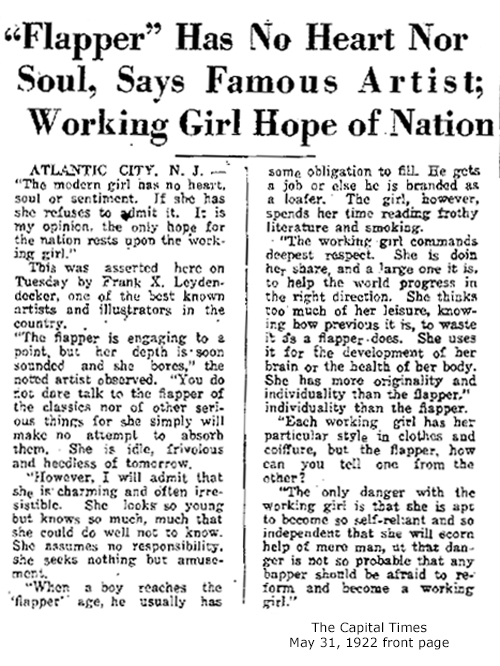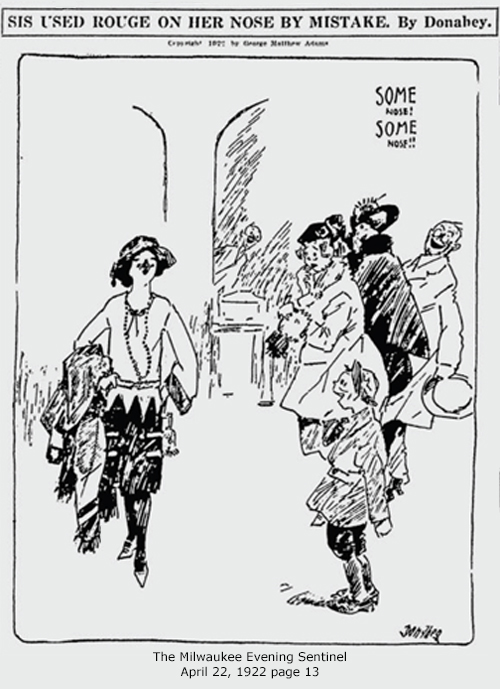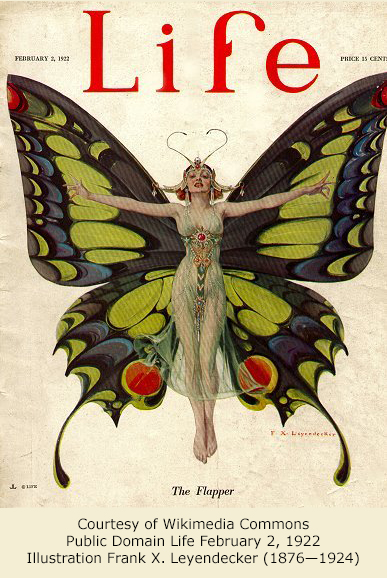What these "mature" types don't seem to remember is they too—almost certainly—were targets of generational derision and, in fact, even their grandparents and great grandparents most likely were criticized by the adults of earlier eras.
Probably it's always been that way.
Young people need their own identities and elders, especially loved ones, often don't understand why what was good enough for them isn't good enough for their children, grandchildren, and others below 30, 20, even 10. (They seem to forget their generations had their own peculiarities.)
Researching a story several years ago, I happened upon an unrelated but revealing newspaper article from April 22, 1922, titled, "Fathers and Mothers Must Learn Flapper Talk to Know What the Younger Generation Are Saying." It was on page 13 of The Evening Sentinel, a late afternoon version of The Milwaukee Sentinel, which was absorbed by the city's evening paper to become The Milwaukee Journal Sentinel in 1995.1 The piece was addressed to the parents of teenagers and young adults.
Flappers came from the ranks of girls and women in the late second, third, and maybe fourth decades of their lives during the Roaring Twenties. Most were born between 1890 and 1910. Where they went boys and young men followed naturally.
Wikipedia analyzes the history of the term flapper and mentions several possible origins: "...a young bird flapping its wings..."; "...teenage girl..whose plaited pigtail 'flapped' on her back"; and even "...from an older word meaning 'prostitute.'"2
That the appellation stemmed from the era's young women wearing their galoshes unbuckled so they flapped, "showing they defied convention" was deemed a "false etymology" 3 by Wikipedia. This was disappointing because I liked its similarity to kids today wearing their pants low or shoes untied or, in my sixties era, boys wearing shirts with the tails out or long hair. Staff at junior and senior high schools I attended actually policed how long a boy's hair was and whether his shirt was tucked in. I suppose similar things go on today.
Mary Marshall, a reporter for the San Antonio Express, wrote in 1924: "Many of us can remember when 'flapper' was just a bit of English slang, like 'swank...' Flapper, of course, was used to indicate the awkward young girl of 15 or so, rather too young to wear women's.
"She was very often the all arms and all legs variety, unused to wearing finery, rather self-conscious yet not unattractive. She was indeed a fledgling—a young wild duck unable to fly, flapping along on the water." 4
Artist Frank X. Leydendecker's appraisal was negative: "The flapper is engaging to a point, but her depth is soon sounded and she bores...You dare not talk to the flapper of the classics nor of other serious things for she simply will make no attempt to absorb them. She is idle, frivolous, and heedless of tomorrow." 5
This bleak assessment seems completely contrary to the stunning cover illustration titled "The Flapper" he created for Life magazine that was published on February 2, 1922.
Its flapper-as-just-emerged-butterfly imagery is superb. She seems to have traveled light years from the confined nineteenth-century parlor of her corseted mother and older sisters and is in touch with and proud of her mental and physical faculties. Maybe she broke out of a chrysalis suspended from a vine in ancient Greece.



This cartoon appeared near
the "flapper talk" story.

Click for bigger image.